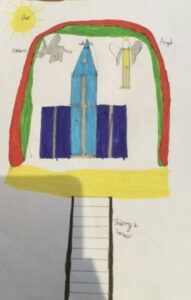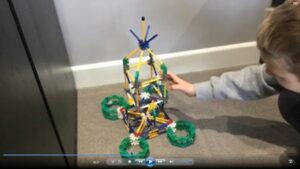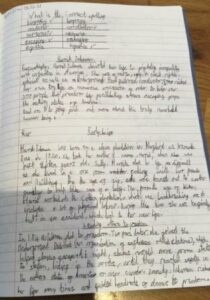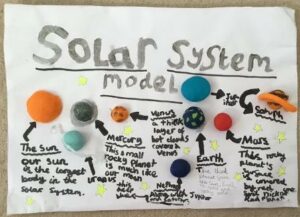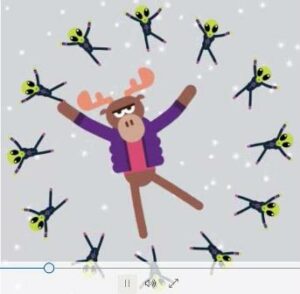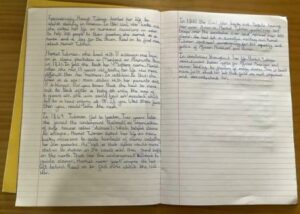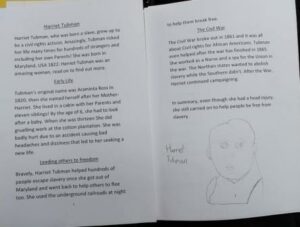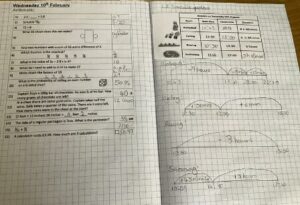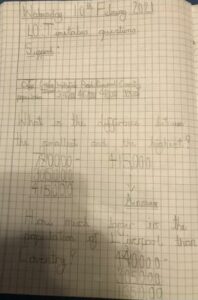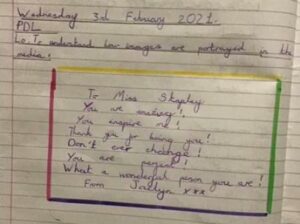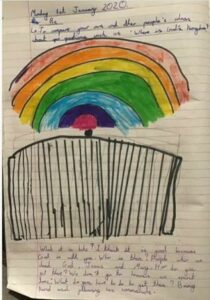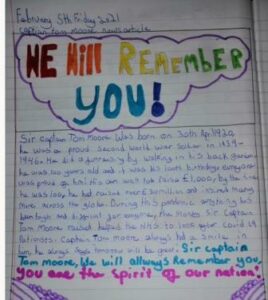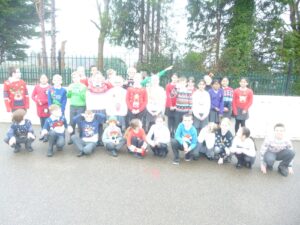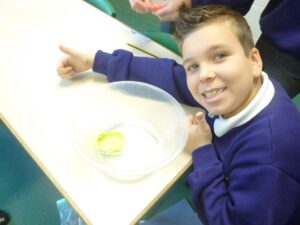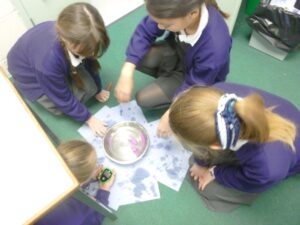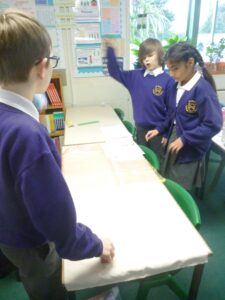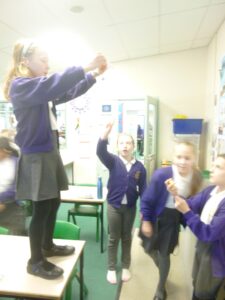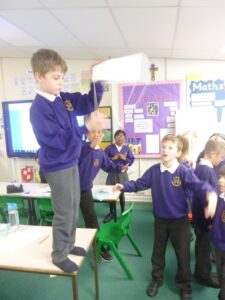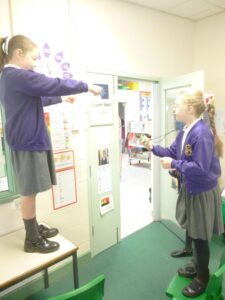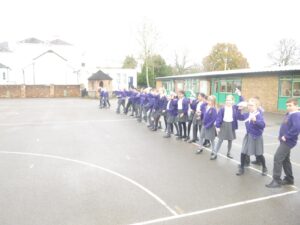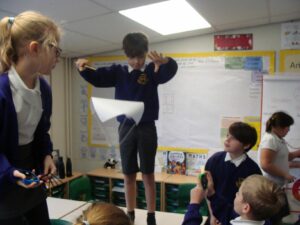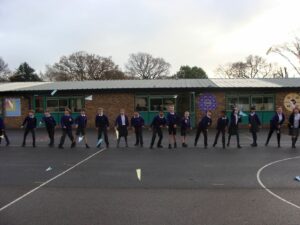Last week of lovely learning before half term…
Well done to you all for again sending in some great pieces of home learning. We continue to have amazing writing about the inspirational life of Harriet Tubman, marvellous problem solving using data in Maths, jaffa cake moon phases, Space creative home tasks, creating coding sequences using Dance Party, reflections in our PDL and RE work and exploring the setting in the opening of Macbeth. Please continue to email your brilliant artwork to Mrs Pearson, who will put them on to the art blog – you may need to scroll down some way to find your piece as there has been so many fabulous pieces sent in.
Inset Day tomorrow (Friday 12th February) so no work is set and there will be no video calls. Children can use this day to finish any work that they haven’t completed, if they wish. Please ensure that the English writing task for this week (Setting description for the opening of Macbeth) is uploaded as this is an assessment piece to see how the children have progressed during this lockdown period.
Don’t forget to keep adding to the children’s MOON DIARIES with the different phases. If it is cloudy, you have the website www.moonphases.co.uk to access to see each daily moon phases to complete your diary over the month of February.
New term begins Monday 22nd February with online learning and for those pupils in school that week – PE day will be Wednesday 24th February.
Please find below a wide variety of work that has been sent in from last week:
Have a restful and safe half – term break and we look forward to seeing you on Monday 22nd February.
Best wishes,
The Year 5 Team
Maths, Science, History, unravelling the mysteries…
Well done to you all for sending in some stunning pieces of home learning. We continue to have amazing work about the solar system sent in as well as ‘recipe’ poems inspired by Benjamin Zephaniah. Biographies written about Harriet Tubman were well written and demonstrated her inspirational qualities. Please continue to email your brilliant artwork to Mrs Pearson, who will put them on to the art blog – you may need to scroll down some way to find your piece as there has been so many fabulous pieces sent in.
Please find below a wide variety of work that has been sent in:
We really appreciate the effort you are all putting into the home learning – children and parents/ carers alike – it’s not easy to be away from the classroom, constant teaching input and friends or to be supporting your child while also having to work from home yourselves. Maintaining routines and work will certainly support the transition back to school, once we are all allowed to return. Thank you for your continued support.
PE for next week is on Thursday 11th February only.
Homework:
Sumdog has been set, with a multiplication task and an arithmetic task. It’s good to keep times tables and mental arithmetic ticking over. This is due on Thursday 11th February.
Please ensure this is still being completed as it will help keep knowledge of multiplication facts ticking over and is a good way of keeping skills taught in mind.
**Reminder – it is a scheduled INSET day on Friday 12th February.
Children who are currently in school will not need to attend that day; there will be no work set on Teams and there will be no class video calls that day. Enjoy a long weekend leading into the half term break!
The reminders when working on Teams:
- Even if you are working through the Oaks videos, you must record all your answers. (In a book, on paper, on a word document, powerpoint – however you want to record it.) All the support and challenge tasks are on word documents and you can record your answers on those as well.
- Please ask your child to check the POSTS section as that is where we will post additional information or videos for your child to access.
- If you cannot access the work via the ASSIGNMENTS tab, go to the FILEStab and find the work in the January 2021 folder.
- Next week each work documents will be saved in a Word and PDF format to ensure that all children can access their learning from a variety of devices. If you cannot open the Word document then please try the PDF version.
- Please try to check in at least once a day on a class video call.
- Class chat is for work purposes not for sending messages or emojis to each other – all your chat conversations are visible to staff and chat notifications can be very distracting for children who are trying to concentrate on their work.
- English and Maths will be uploaded daily.
- Foundation subjects will have four days of work uploaded on Monday. There will be four subjects/tasks over Monday – Thursday. Use Friday afternoon to catch up on any work you have missed during the week.
- We only need ONE photo/ uploaded piece of work per day for English and Maths.
- English and Maths should be uploaded by 12 noon on Friday and Foundation subjects should be uploaded by 3pm on Friday.
- If you have any technical issues with Teams that you are finding hard to fix, please phone the office and they can support you to resolve these. Issues with broadband – unfortunately we cannot resolve these problems in terms of making Teams work on your device. Thank you for your understanding.
- Remember to save the Word doc/ PDF to your device before you overwrite/ add to the document otherwise you will save your changes to the main folder on Teams and the work is then lost for others to use.
As in previous weeks, next week, you may not receive a message back from your teacher immediately as we are also teaching children who are in the classroom at the same time. We will respond to work sent by the end of the week.
No formal work will be set for Friday afternoons – please use this time to finish any incomplete work.
Have a wonderful weekend,
Year 5 Team
More fabulous learning…
Thank you for continuing to send in your home learning – solar system creations keep coming in as well as other creative homework in the form of board games and newspaper reports (see below). Also some great examples of home learning have been uploaded such as brilliant problem solving in Maths, detailed scientific diagrams and presentations about the Earth and Moon’s orbit and Space and some excellent ‘recipe’ poems inspired by Benjamin Zephaniah. The children have once again enjoyed Mrs Pearson’s art project- see the brilliant pieces of art on the Art blog and continue to email them to Mrs Pearson.
We are so thankful for all the effort you’re putting in with your children – it is not easy juggling working from home as well as supporting your children’s needs however we do really appreciate the commitment you are showing to ensure your child maintains a learning routine at home in order to ensure a smoother transition back into school. We will continue to respond giving feedback to work that it sent in. You can upload work daily to the assignment page or class email. All English and Maths work should be submitted by Friday 12 noon and foundation subject work should be submitted by Friday 3pm. Thank you for your continuing support.
PE for next week is on Wednesday 3rd February only.
Homework:
Sumdog has been set, with a multiplication task and an arithmetic task. It’s good to keep times tables and mental arithmetic ticking over. This is due on Thursday 4th February.
** Something we’ve learnt this week on Teams – remember to save the Word doc/ PDF to your device before you overwrite/ add to the document otherwise you will save your changes to the main folder on Teams and the work is then lost for others to use.
The reminders when working on Teams:
- Even if you are working through the Oaks videos, you must record all your answers. (In a book, on paper, on a word document, powerpoint – however you want to record it.) All the support and challenge tasks are on word documents and you can record your answers on those as well.
- Please ask your child to check the POSTS section as that is where we will post additional information or videos for your child to access.
- If you cannot access the work via the ASSIGNMENTS tab, go to the FILES tab and find the work in the January 2021 folder.
- Next week each work documents will be saved in a Word and PDF format to ensure that all children can access their learning from a variety of devices. If you cannot open the Word document then please try the PDF version.
- Please try to check in at least once a day on a class video call.
- Class chat is for work purposes not for sending messages or emojis to each other – all your chat conversations are visible to staff and chat notifications can be very distracting for children who are trying to concentrate on their work.
- English and Maths will be uploaded daily.
- Foundation subjects will have four days worth of work uploaded on Monday. There will be four subjects/tasks over Monday – Thursday. Use Friday afternoon to catch up on any work you have missed during the week.
- We only need ONE photo/ uploaded piece of work per day for English and Maths.
- English and Maths should be uploaded by 12 noon on Friday and Foundation subjects should be uploaded by 3pm on Friday.
- If you have any technical issues with Teams that you are finding hard to fix please phone the office and they can support you to resolve these. Issues with broadband – unfortunately we can not resolve these problems in terms of making Teams work on your device. Thank you for your understanding.
As in previous weeks, next week, you may not receive a message back from your teacher immediately as we are also teaching children who are in the classroom at the same time. We will respond to work sent by the end of the week.
No formal work will be set for Friday afternoons – please use this time to finish any incomplete work.
Have a great weekend,
Year 5 Team
Can You See The Man On The Moon?
We continue to have amazing work being uploaded this week – more solar system creations (see below), brilliant R.E. work about the sacrament of baptism, marvellous Maths and some superbly written narratives about the Man on the Moon. We’ve seen sock puppets created from online Brownie meetings and the invention of a new solar system board game! Hopefully we’ll get some photos of these sent through and we can share them with you.
We are so proud of all the effort you’re putting in and work that you are doing – it is not easy being at home, away from friends and teaching staff, relying on parents who may be busy with work but you are doing a wonderful job of continuing to learn and respond to feedback in your work. Keep it up!
PE for next week is on Thursday 28th January only.
Homework:
Sumdog has been set, with a multiplication task and an arithmetic task. It’s good to keep times tables and mental arithmetic ticking over. This is due on Thursday 28th January.
** Something we’ve learnt this week on Teams – remember to save the Word doc/ PDF to your device before you overwrite/ add to the document otherwise you will save your changes to the main folder on Teams and the work is then lost for others to use.
The reminders when working on Teams:
- Even if you are working through the Oaks videos, you must record all your answers. (In a book, on paper, on a word document, powerpoint – however you want to record it.) All the support and challenge tasks are on word documents and you can record your answers on those as well.
- Please ask your child to check the POSTSsection as that is where we will post additional information or videos for your child to access.
- If you cannot access the work via the ASSIGNMENTStab, go to the FILES tab and find the work in the January 2021
- Next week each work documents will be saved in a Word and PDF format to ensure that all children can access their learning from a variety of devices. If you cannot open the Word document then please try the PDF version.
- Please try to check in at least once a day on a class video call.
- Class chat is for work purposes not for sending messages or emojis to each other – all your chat conversations are visible to staff and chat notifications can be very distracting for children who are trying to concentrate on their work.
- English and Mathswill be uploaded daily.
- Foundation subjectswill have four days worth of work uploaded on Monday. There will be four subjects/tasks over Monday – Thursday. Use Friday afternoon to catch up on any work you have missed during the week.
- We only need ONE photo/ uploaded piece of work per day for English and Maths.
- English and Mathsshould be uploaded by 12 noon on Friday and Foundation subjectsshould be uploaded by 3pm on Friday.
- If you have any technical issues with Teamsthat you are finding hard to fix please phone the office and they can support you to resolve these. Issues with broadband – unfortunately we can not resolve these problems in terms of making Teams work on your device. Thank you for your understanding.
As last week, next week, you may not receive a message back from your teacher immediately as we are also teaching children who are in the classroom at the same time.
We will respond to work sent by the end of the week.
No formal work will be set for Friday afternoons – please use this time to finish any incomplete work.
Have a super weekend,
Year 5 Team
To infinity and beyond…
It has been so lovely to see all the fabulous work that the children have been uploading this week. It is clear that they are working hard and taking pride in their presentation of their home learning. Thank you for your support of the children at home in creating learning routines which support the school day. It is so beneficial for them to maintain a routine of learning and will enable the children to transition back into school life much easier.
A big celebration this week has been the children creating different versions of the Solar Systems as part of our SPACE topic- some very creative ideas. Have a look below at the photos:
Well done for all the hard work that is being done on Teams again this week. Just a few reminders when working on Teams:
- Even if you are working through the Oaks videos, you must record all your answers. (In a book, on paper, on a word document, powerpoint – however you want to record it.) All the support and challenge tasks are on word documents and you can record your answers on those as well.
- Please ask your child to check the POSTS section as that is where we will post additional information or videos for your child to access.
- If you cannot access the work via the ASSIGNMENTS tab, go to the FILES tab and find the work in the January 2021 folder.
- Next week each work documents will be saved in a Word and PDF format to ensure that all children can access their learning from a variety of devices. If you cannot open the Word document then please try the PDF version.
- Please try to check in at least once a day on a class video call.
- Class chat is for work purposes not for sending messages or emojis to each other – all your chat conversations are visible to staff and chat notifications can be very distracting for children who are trying to concentrate on their work.
- English and Maths will be uploaded daily.
- Foundation subjects will have four days worth of work uploaded on Monday. There will be four subjects/tasks over Monday – Thursday. Use Friday afternoon to catch up on any work you have missed during the week.
- We only need ONE photo/ uploaded piece of work per day for English and Maths.
- English and Maths should be uploaded by 12 noon on Friday and Foundation subjects should be uploaded by 3pm on Friday.
- If you have any technical issues with Teams that you are finding hard to fix please phone the office and they can support you to resolve these. Issues with broadband – unfortunately we can not resolve these problems in terms of making Teams work on your device. Thank you for your understanding.
As last week, next week, you may not receive a message back from your teacher immediately as we are also teaching children who are in the classroom at the same time.
We will respond to work sent by the end of the week.
No formal work will be set for Friday afternoons – please use this time to finish any incomplete work.
PE for next week is on Wednesday 20th January only.
Poetry competition booklets have been uploaded to the FILES tab – this is for the whole of the spring term.
Homework:
Sumdog has been set, with a multiplication task and an arithmetic task. It’s good to keep times tables and mental arithmetic ticking over. This is due on Thursday 21st January.
Enjoy your weekend,
Year 5 Team
Here he we go again…
Wow! What a week! It was lovely to have seen most of you in school on Monday and catch up about your Christmas presents.
Well done for settling into working on Teams again so quickly. Just a few reminders about expectations when working on Teams:
- Even if you are working through the Oaks videos, you must record all your answers. (In a book, on paper, on a word document, powerpoint – however you want to record it.) All the support and challenge tasks are on word documents and you can record your answers to those as well.
- If you cannot access the work via the ASSIGNMENTS tab, go to the FILES tab and find the work in the January 2021 folder.
- Please try to check in at least once a day on a class video call.
- Class chat is for work purposes not for sending messages or emojis to each other – all your chat conversations are visible to staff.
- English and Maths will be uploaded daily.
- Foundation subjects will have a week’s worth of work uploaded at the start of the week.
- We only need ONE photo/ uploaded piece of work per day for English and Maths.
Next week, you may not receive a message back from your teacher immediately as we are also teaching children who are in the classroom at the same time.
We will respond to work sent by the end of the week.
No formal work will be set for Friday afternoons – please use this time to finish any incomplete work.
Reading passports have been uploaded to FILES and ASSIGNMENTS – this is for the whole of the spring term.
Homework:
Sumdog homework was set on Thursday – there is a multiplication task and an arithmetic task to complete by Thursday 14th January.
Enjoy your weekend,
The Year 5 team.
Floating or sinking?
Thank you for the wonderful array of festive jumpers worn today – it certainly felt like Christmas is on its way! Many thanks for all the tins, and some money handed in, to support those in need at this time.
This week.
We’ve been busy learning different strategies for problem solving in Maths this week, as well as completing our evacuation diaries in English. We’ve continued investigating forces in Science, looking at gravity, upthrust (lift) and water resistance.
Congratulations!
Well done to Conor Marples, Aurora Andrews, Jacqui Edwards and Cian Mclaughlin for the Year 5 winners of the Reading Passport Challenge. They will have a film and popcorn afternoon next week. All children who handed in their Reading Passports will have some extra playtime to celebrate their achievement.
Christmas service.
All the children sang beautifully (socially distanced and outside) yesterday, when being filmed for the KS2 Christmas service. We also had a number of actors taking roles from the Nativity too. Look out for the broadcast – coming soon to a screen near you!
Homework.
This week the children have been set some vocabulary and maths home learning. This is due Thursday 17th December. Just a reminder that this is the last day of term for the children.
** Reminder – children need to wear their PE kits on Monday 14th as it is Week 2.
Hope you have a lovely weekend,
The Year 5 Team
May The Force Be With You!
We’ve been exploring forces today during our STEM deep learning day. The children have been learning specifically about gravity, friction, air resistance and water resistance.
Below are some photos of their learning:
Homework:
This week the children have some vocabulary work to complete and maths learning to do on Sumdog. They also need to hand in a book review. This is due in on Thursday 10th December.
Next week will be Week 1, which means children need their PE kits on Wednesday.
Enjoy your weekend,
The Year 5 Team
